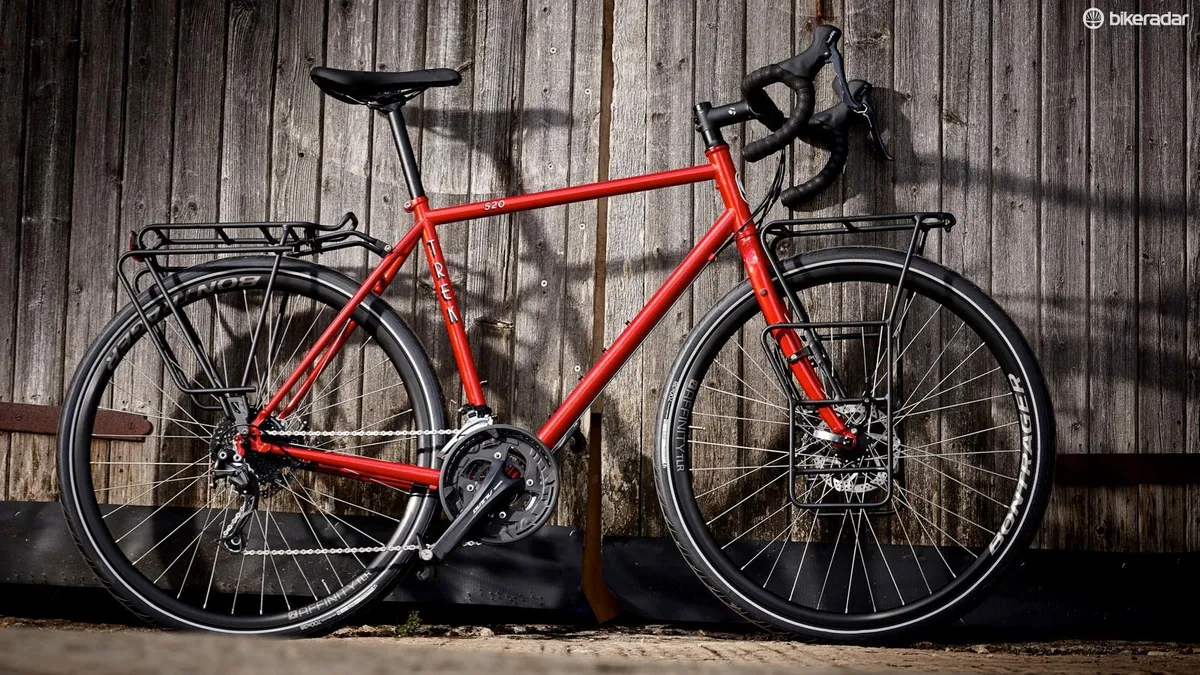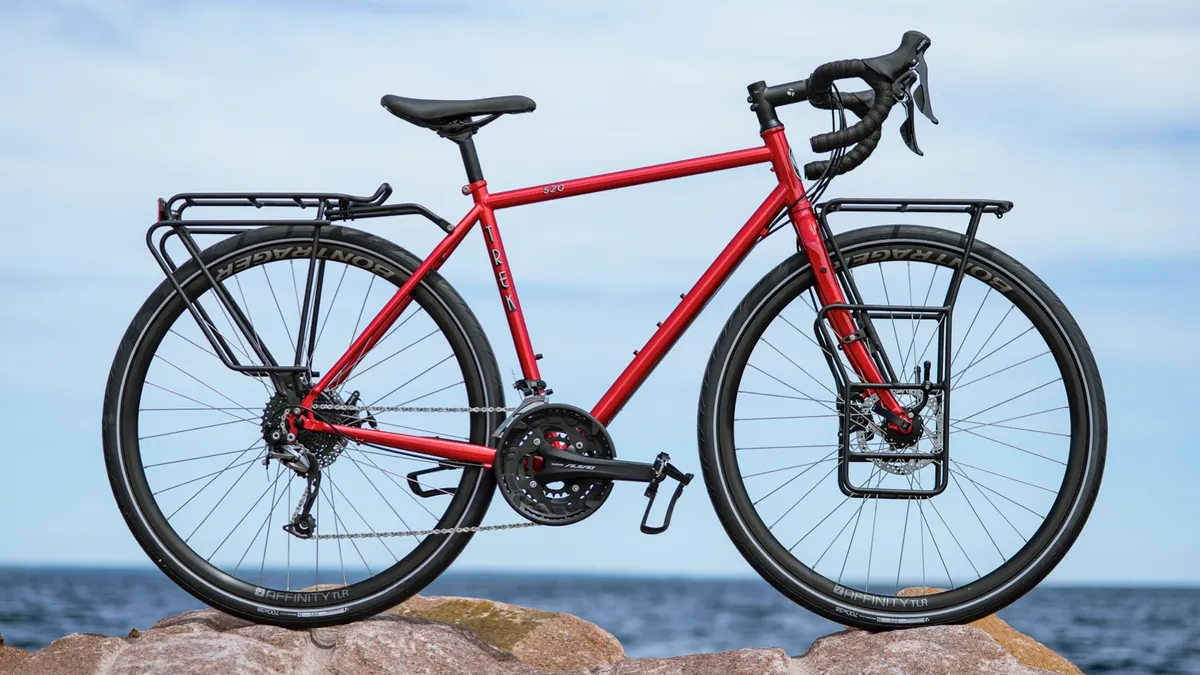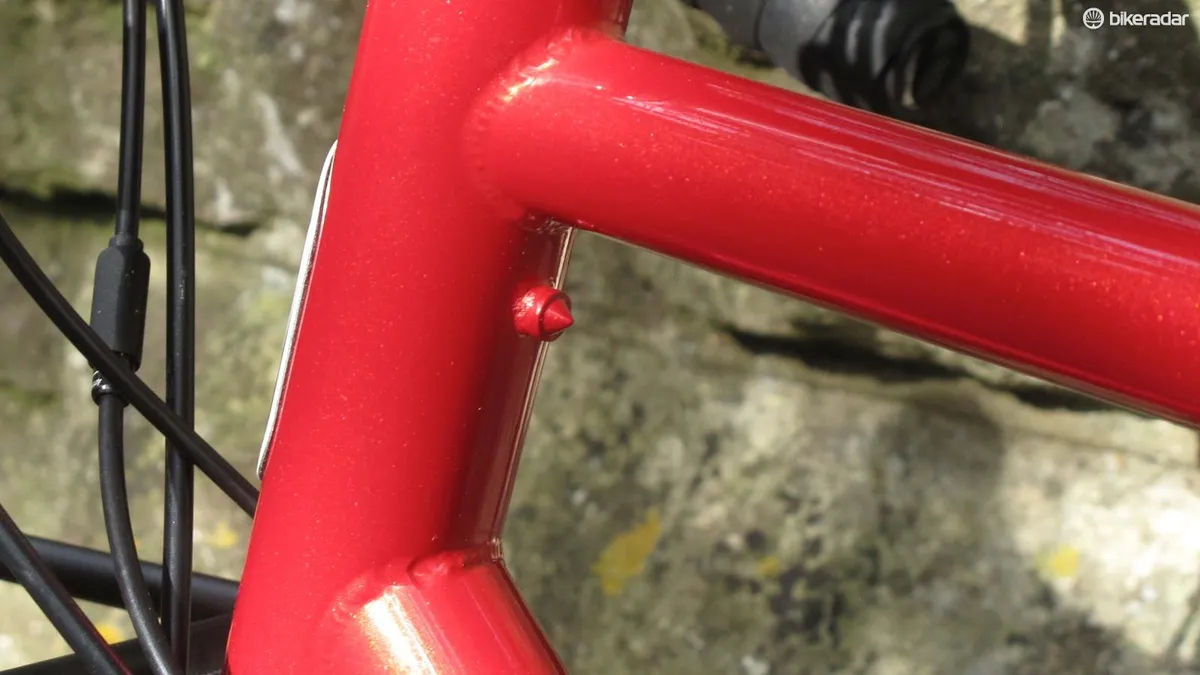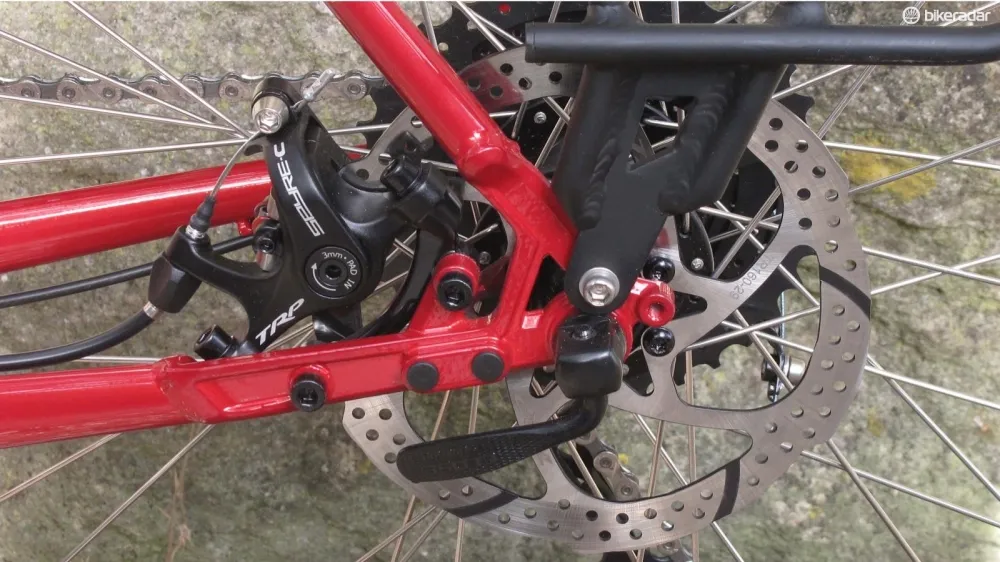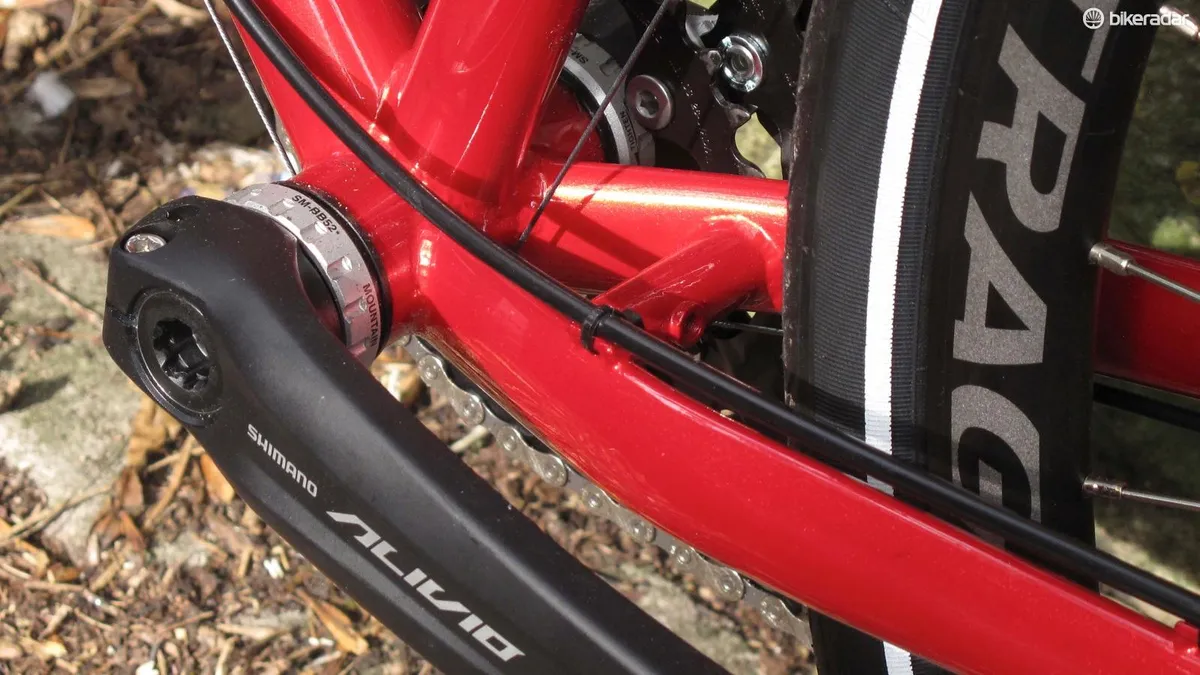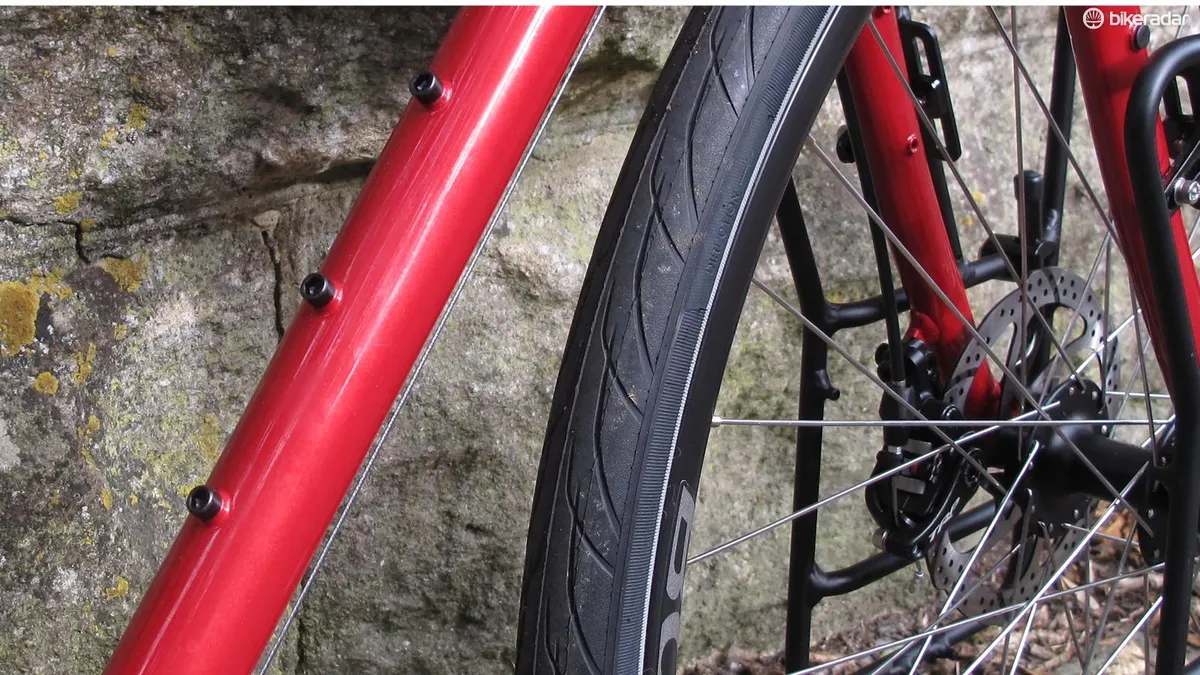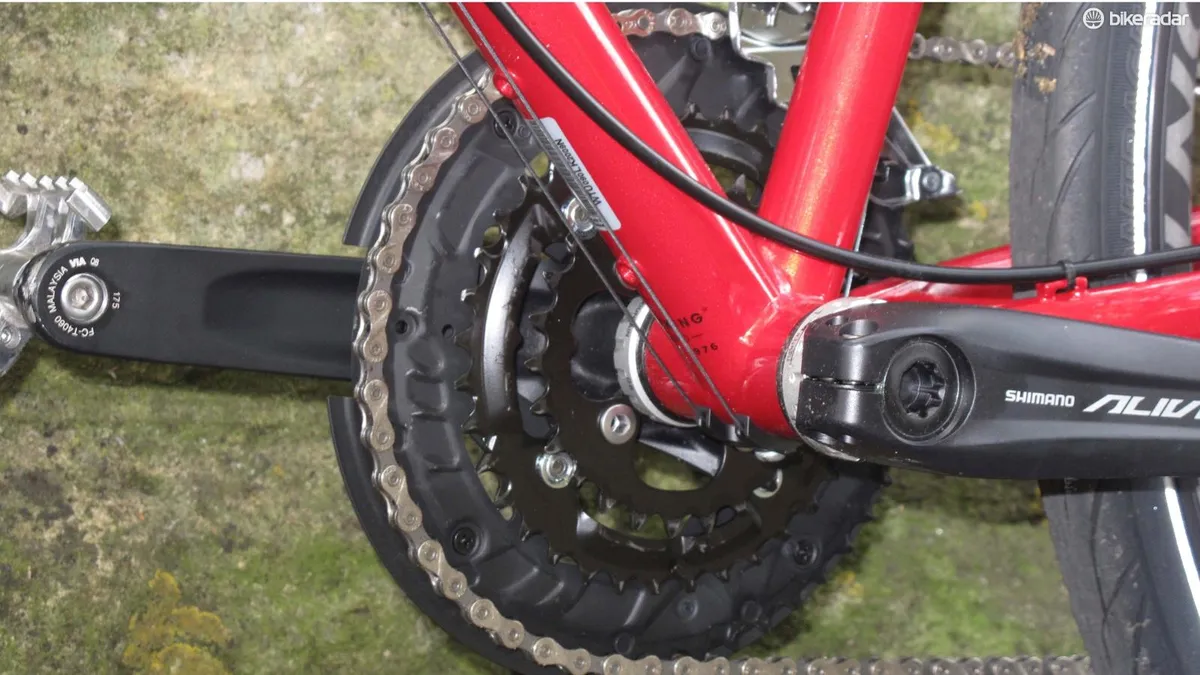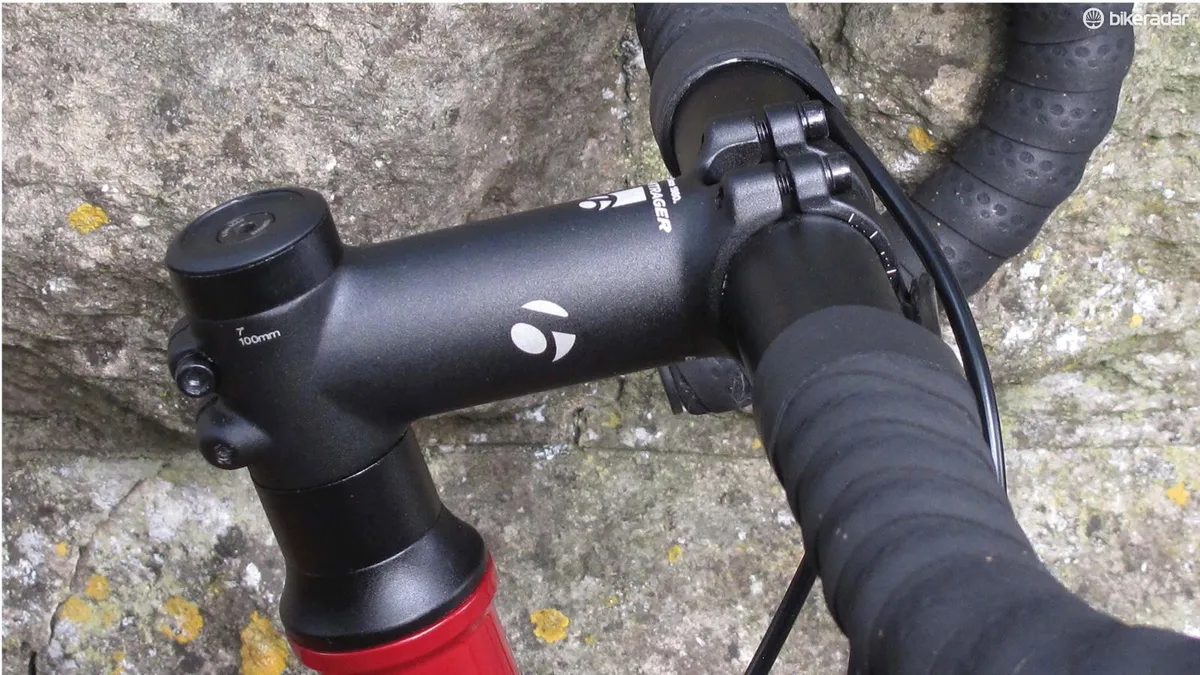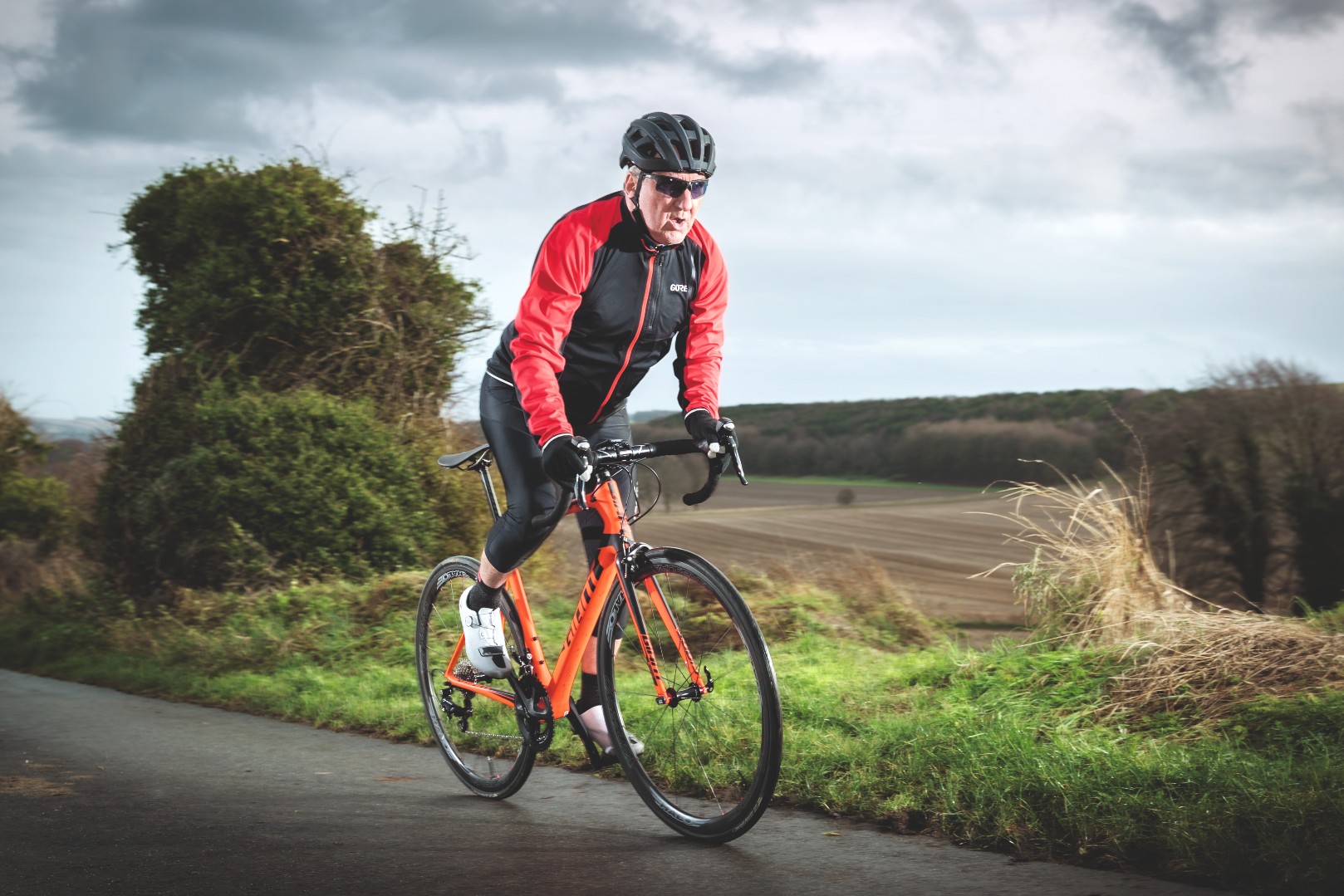The Wisconsin-based company has been making its steel 520 bike since 1983 — making it a couple of years younger than Specialized’s Allez and a decade or so younger than the Dawes Galaxy, probably the standard bearer for steel touring bikes, at least in Britain — and started out as an all-round road bike. But in the years since 1983 the bike has flitted between all-rounder and full-on tourer.
The 2019 incarnation is very much the latter beast, having gained even more touring-friendly features than the 2018 model, and it now has some serious expedition chops to its name.
Trek 520 Disc spec as tested
- Frame: TIG-welded butted chromoly steel
- Fork: Alloy disc touring with lowrider mounts
- Handlebar: Bontrager Comp VR-C
- Stem: Bontrager Elite ‘Blendr’ with computer and light mounts
- Seatpost: Bontrager 27.2mm alloy, 12mm offset
- Saddle: Bontrager Evoke 1.5
- Shifters: Shimano Sora
- Front derailleur: Shimano Sora
- Rear derailleur: Shimano Alivio rear
- Brakes: TRP Spyre C2.0 mechanical disc
- Brake levers: Shimano Sora
- Cassette: Shimano HG200, 11-36, 9-speed
- Chain: KMC X9
- Chainset: Shimano Alivio triple 48/38/26T
- Bottom bracket: Shimano external cartridge bearing
- Wheels: Bontrager Affinity TLR tubeless-ready 36-hole rims, Shimano M475 hubs
- Tyres: Bontrager H1 Hard-case Ultimate, 700x38mm with reflective sidewall
- Extras: Bontrager 15kg-max capacity front rack and 25kg-capacity rear rack
- Weight: 13.97kg (57cm including racks but not pedals)
Trek’s 520 ups its touring chops for 2019
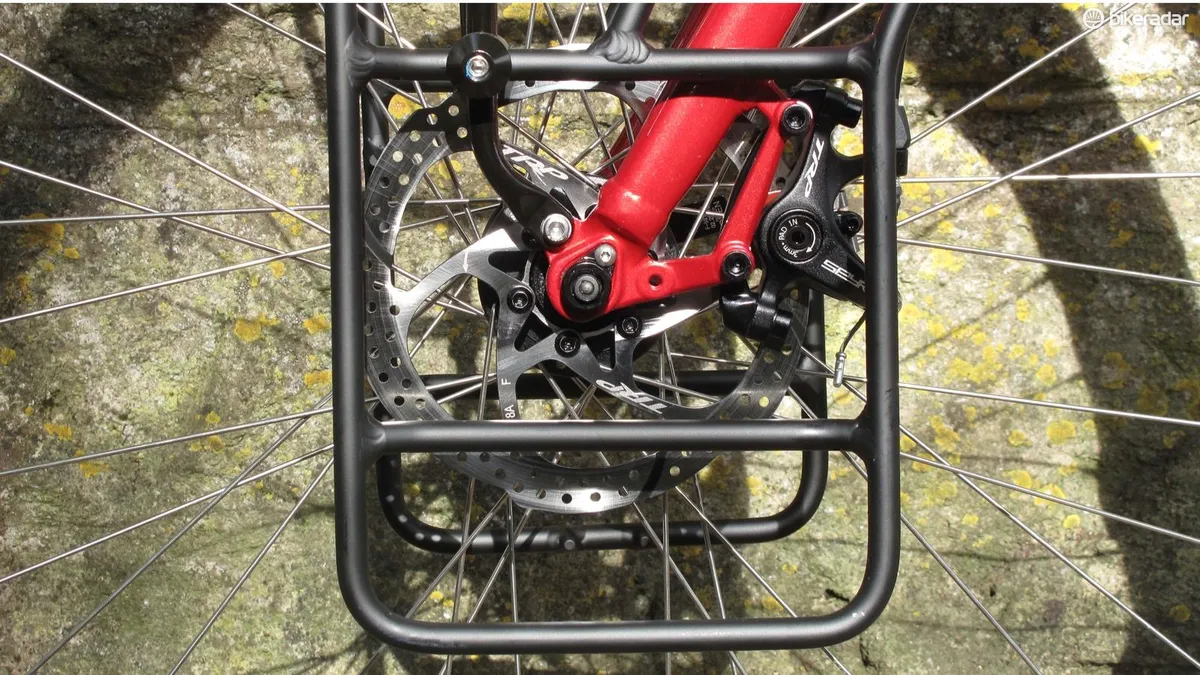
Most notably for 2019 the 520 has gained a 15kg-capacity Bontrager front rack and a much lower bottom gear — the all-important one — compared with the 2018 model. It has also moved from bar-end shifters to more familiar Sora STI levers.
Trek’s original 520 was lugged, whereas today’s model has a neatly TIG-welded chromoly steel frame with an alloy thru-axled fork; the rear wheel has a standard quick-release.
There’s a peg at the rear of the head tube to fix a frame pump under the top tube and a chain peg on the driveside seatstay. There are three bottle bosses on the down tube, allowing you to fix the bottle cage at different points, and further fittings on the fork, so you can adjust the height of the rack or carry more bottle cages if you forego it altogether.
Triple the fun
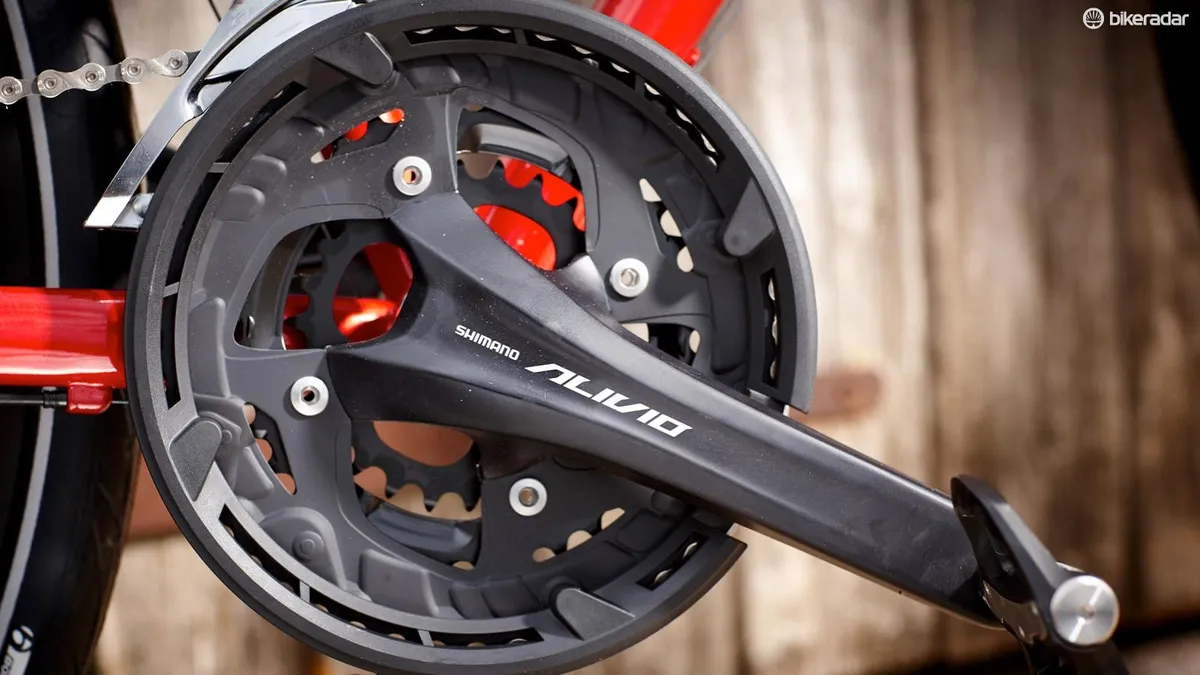
Most significantly for 2019, and a sign of its more adventurous ambitions, is that the gearing has gone even lower than before. Make no mistake, this is a good thing.
If your bike is carrying a 70kg rider (okay, nearer 75kg in my case) and approaching 40kg of kit, and you reach the bottom of a long or/and steep hill, you can never have a bottom gear that’s too low. This is where the very-rarely-seen-on-a-road-bike triple chainset comes in.
Trek should also be praised for making it a 48/36/26t Alivio mountain bike chainset, with a teeny-tiny 26t inner chainring, rather than a Shimano 105 road bike 50/39/30 or similar.
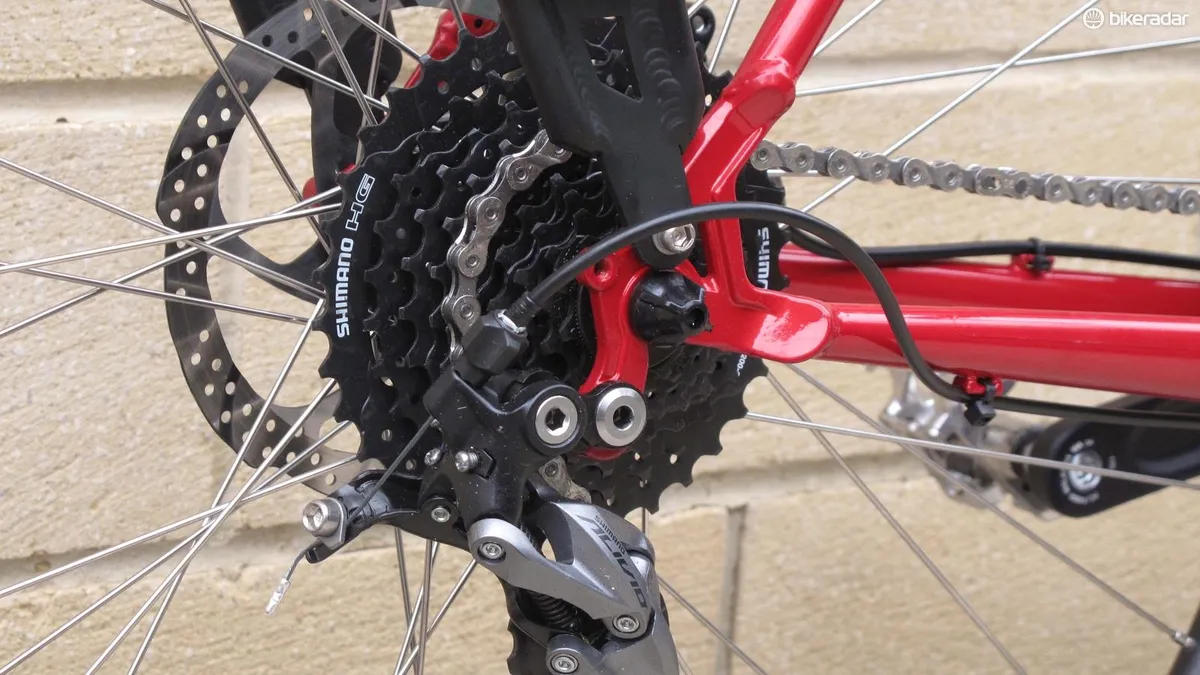
Trek really makes the most of this with the saucer-sized 36t sprocket, which delivers a very low bottom gear (under 20in). The 48x11 top gear (around 120in) is more than adequate for powering down hills, and the Sora gear lever and Alivio rear derailleur pairing works well, even with the large jumps necessitated by the 9-speed 11-36 cassette.
Is that bailout/granny gear too small? Not if you find yourself on an unsurfaced road at the foot of a 2,000ft / 600m peak, which happened to me touring in New Zealand years ago.
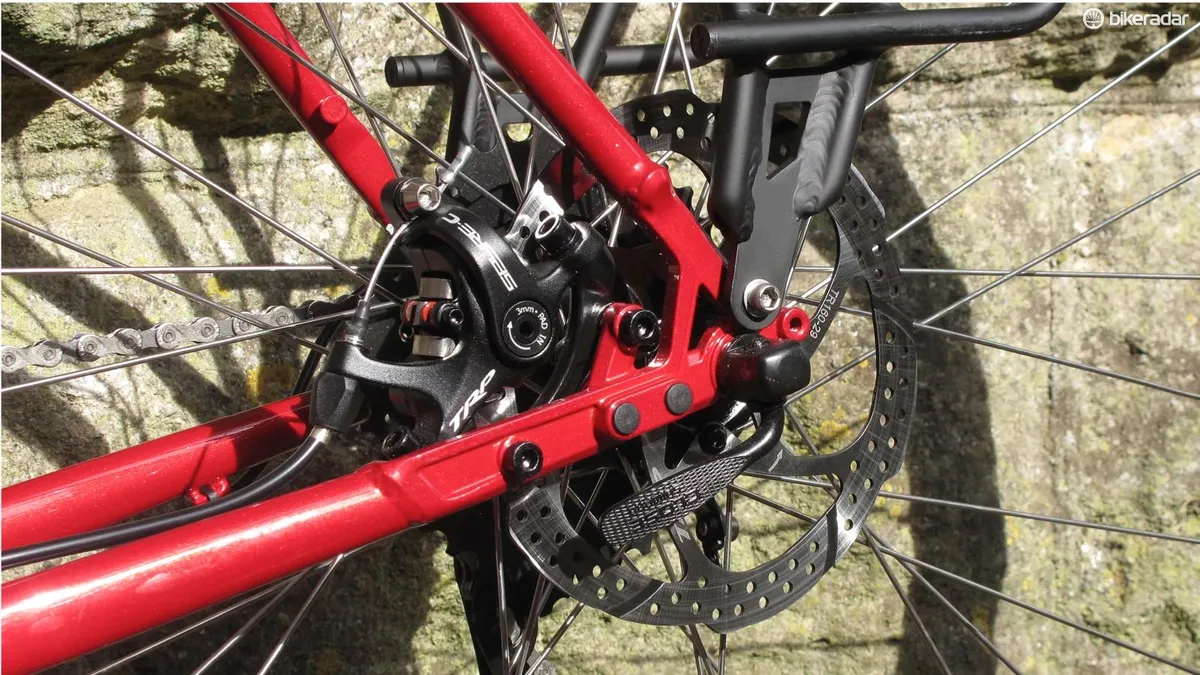
The front thru-axles help you get the most from the TRP Spyre brakes, which are among the best mechanical disc brakes around with the advantage of being easier to fix and fettle than hydraulics when off the beaten track. Okay, they require more effort through the brake levers than even low-end hydraulic disc brakes, but they work in all weather conditions.
That said, the 36-spoke Bontrager Affinity rims give the impression they’d survive the apocalypse. The 38mm Bontrager Hard-Case tyres ride well on tarmac and were fine on the light gravel of my local canal towpath, and the rims will take wider rubber too, so you can fit more gravel-specific or off-road-flavoured tyres.
Go low, go slow, go long…
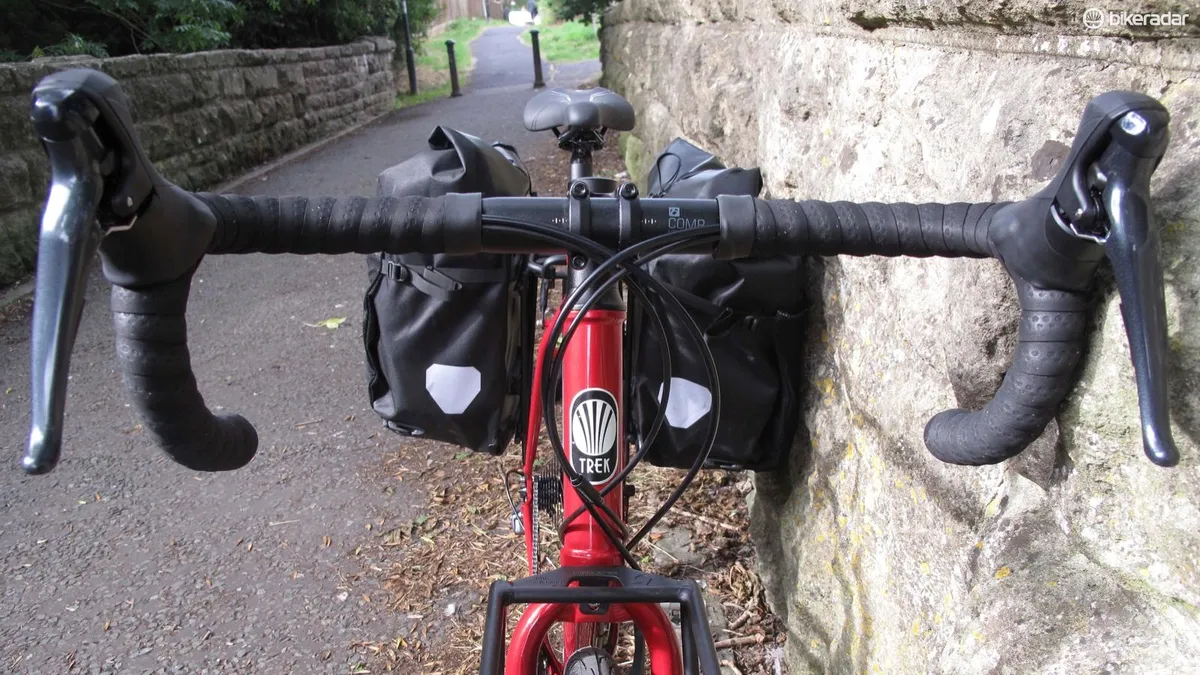
The geometry is touring leisurely, with long chainstays, a wheelbase well over a metre and a slack head-tube angle. This creates a very stable, comfortable, semi-upright riding position, ideal for both touring and commuting.
Contact points are good and you can rack up those miles comfortably, albeit slowly. Where it really comes into its own is in its ability to carry considerable quantities of kit, which is where the super-low gearing helps.
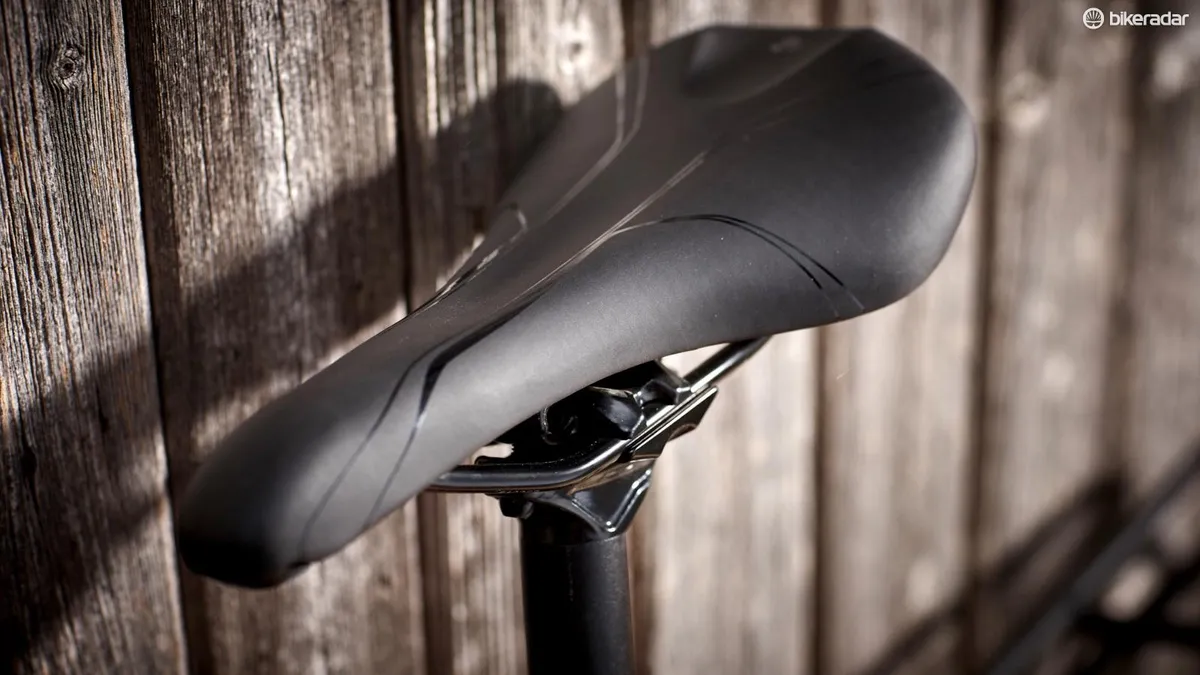
My 16-mile commute ends with a few hundred metres of climbing at 10–12 percent, which usually requires out-of-the-saddle honking or even zig-zagging on the steepest section.
Not with the Trek 520. Even with bulging panniers I could stay seated in the bottom gear and spin-spin-spin. On a tourer you want to twiddle and maintain a high cadence rather than crank a knee-crunching gear. If you are loading the 520 up to the gunwales, split the load between the 25kg capacity rear rack and 15kg front, which will balance the handling better.
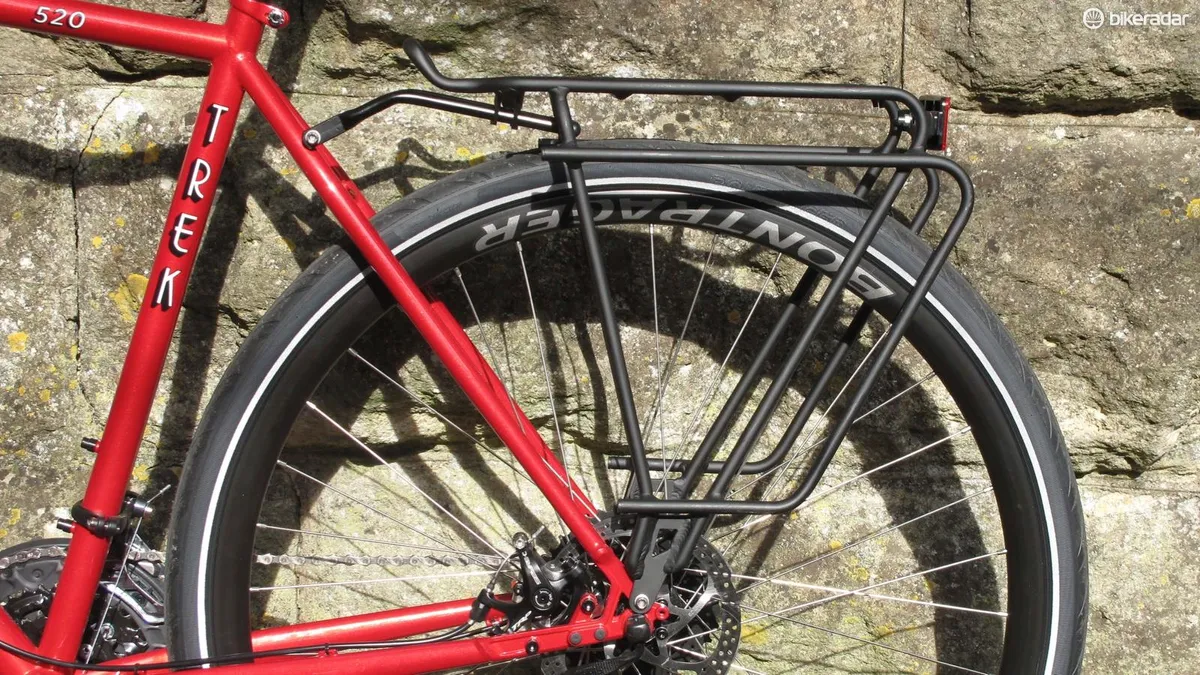
Trek 520 Disc early verdict
The 2019 is £100 / $215 more expensive than last year’s model, but I think it justifies the extra cost (in the UK at least) if you fancy tackling some full-on, continent-traversing treks.
The front rack ups carrying capacity to the max, with more bosses for greater adaptability, and while Sora STI may nominally be a lower spec than 2018’s bar-end shifters, the move to a much lower bottom gear more than makes up for that.
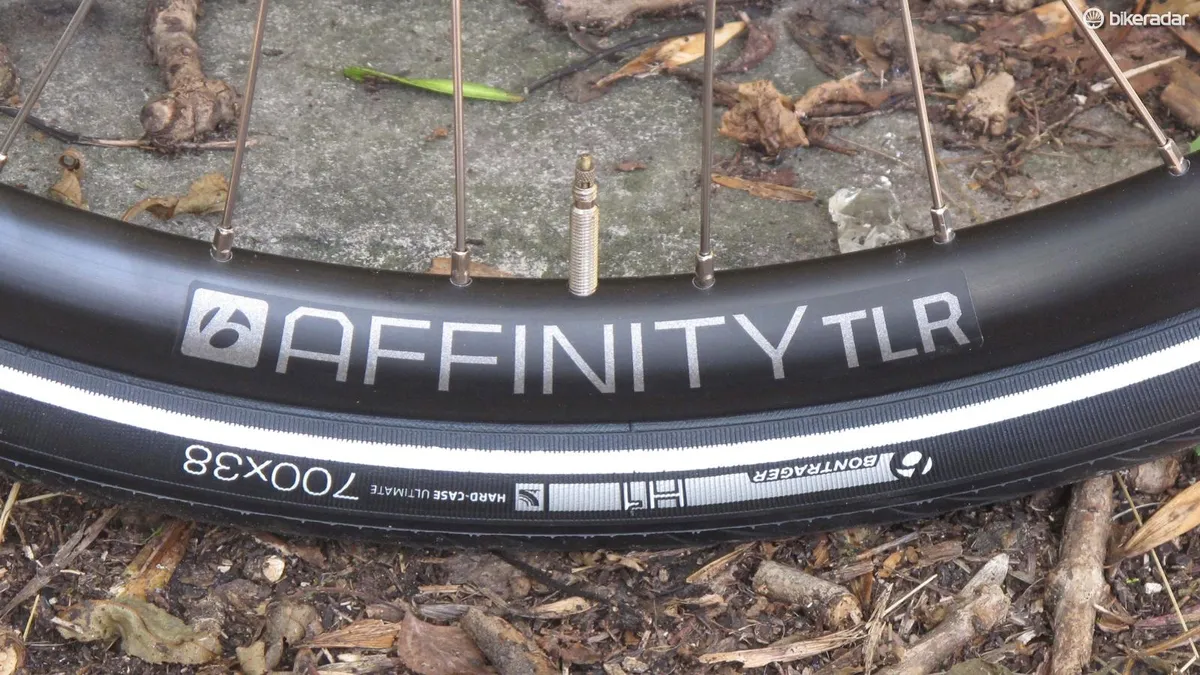
Upping tyre spec from 32mm to 38mm adds weight, yes, but increases comfort, which can be further added to by going tubeless or to even chunkier rubber.
If you carry heavy loads you could use Trek’s 520 for tough commuter runs but the 520 is most at home on the wide-open road. Thirty-five years of history so far, and we reckon you could get a lifetime of trekking adventure on this well-specced, attractively priced bike.
